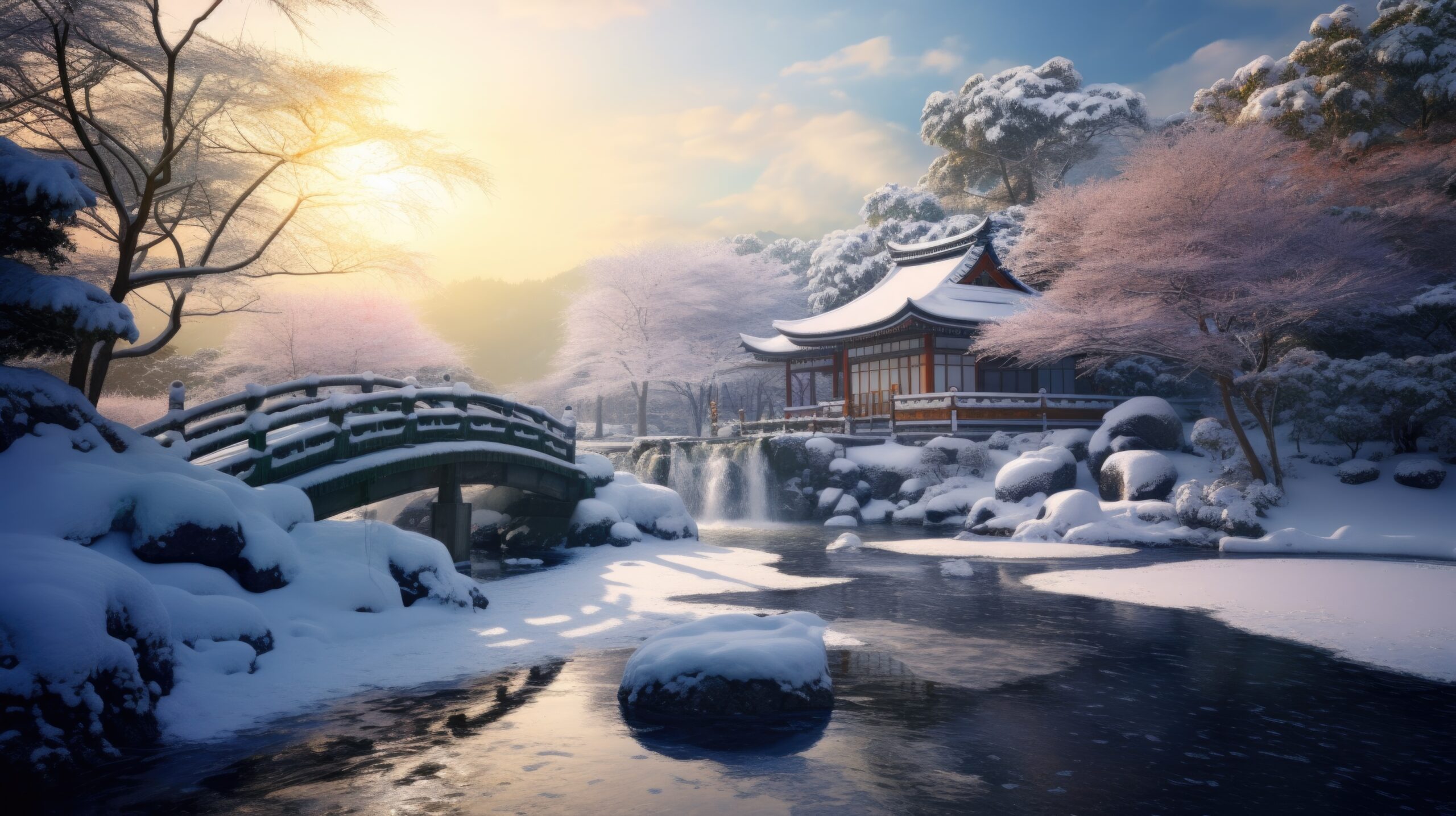In the realm of digital entertainment, Japanese video games have carved a niche so profound that their influence resonates across the globe. Beyond their innovative gameplay and captivating narratives, it’s the distinctive artistry that sets them apart, making each game not just a plaything but a piece of art. This article delves into the fascinating world of Japanese video game artistry, exploring its aesthetics, evolution, and the influential artists behind iconic game art. From the role of manga and anime in shaping game designs to the diverse visual styles and the impact of this artistry worldwide, we uncover how Japanese game art enhances player experience and the unique storytelling through visuals. As we look towards the future, we celebrate the fusion of traditional and modern art in gaming, providing a glimpse behind the scenes of the creative process and celebrating the iconic characters shaped by Japanese artistry.
1. Unveiling the Aesthetics of Japanese Video Games
Japanese video games are renowned for their unique aesthetic appeal, blending traditional art forms with cutting-edge technology. The intricate details in character design, vibrant color palettes, and dynamic backgrounds contribute to immersive worlds that captivate players. This distinct style is not only about visual pleasure but also serves to enhance storytelling, making each game a rich cultural experience. The aesthetics often reflect Japan’s rich history and mythology, incorporating elements like samurai warriors, mystical creatures, and futuristic cities, thereby offering a visual feast that is instantly recognizable.
2. The Evolution of Artistry in Japan’s Gaming Industry
The evolution of artistry in Japan’s gaming industry is a testament to the country’s relentless pursuit of innovation. From the pixel art of the 1980s to the sophisticated 3D graphics of today, Japanese game art has undergone a significant transformation. Early games were limited by technology, yet artists ingeniously used pixel art to create iconic characters and worlds. As technology advanced, so did the complexity and beauty of game art, with artists now able to create vast, detailed worlds that are both breathtaking and immersive. This evolution reflects a broader trend in the industry toward providing more realistic and engaging player experiences.
3. Influential Artists Behind Iconic Japanese Game Art
Several influential artists have left an indelible mark on the Japanese video game industry. Artists like Yoshitaka Amano, known for his work on the Final Fantasy series, and Akira Toriyama, of Dragon Ball fame and who contributed to the Dragon Quest series, have become legendary. Their unique styles – Amano’s ethereal and intricate designs and Toriyama’s vibrant and dynamic characters – have defined the visual aspect of their respective series. These artists have inspired countless others, setting the standard for what is visually possible in video games.
4. The Role of Manga and Anime in Video Game Designs
Manga and anime have played a pivotal role in shaping the visual styles of Japanese video games. The influence of these mediums is evident in the character designs, storylines, and even gameplay mechanics of many games. This cross-pollination has led to a distinct visual and narrative style that blurs the lines between video games, manga, and anime. Characters with large, expressive eyes, colorful hair, and exaggerated expressions have become a hallmark of this influence, making Japanese video games easily distinguishable from their Western counterparts.
5. Exploring the Diversity of Visual Styles in Japanese Games
The diversity of visual styles in Japanese video games is staggering. From the cel-shaded art of games like "The Legend of Zelda: Breath of the Wild" to the hyper-realistic graphics of "Final Fantasy XV," Japanese game developers have mastered a range of visual techniques to tell their stories. This diversity not only showcases the versatility and skill of Japanese artists but also ensures that there is something for every type of gamer. Whether you prefer the nostalgic charm of pixel art or the immersive experience of 3D graphics, Japanese video games offer a wide array of visual styles to explore.
6. The Impact of Japanese Video Game Art Globally
Japanese video game art has made a significant impact globally, influencing not just the gaming industry but also popular culture at large. The distinctive style of Japanese games has inspired artists and developers worldwide, contributing to a global appreciation for this art form. Iconic characters and visuals from Japanese video games have become cultural icons, appearing in everything from movies and television shows to fashion and street art. This global impact underscores the universal appeal of Japanese video game artistry and its role in bridging cultural divides.
7. How Japanese Game Art Influences Player Experience
The artistry of Japanese video games plays a crucial role in influencing player experience. Visually stunning worlds and characters not only enhance the immersive quality of these games but also contribute to storytelling and emotion. Artistic elements like color, lighting, and composition are meticulously crafted to evoke specific feelings and guide the player’s journey. This attention to detail ensures that players are not just passively consuming content but actively engaging with a living, breathing world, making each game a memorable experience.
8. The Fusion of Traditional and Modern Art in Gaming
Japanese video game artistry is characterized by a unique fusion of traditional and modern art. This blend is evident in games that incorporate classical Japanese aesthetics like ink wash painting and woodblock prints with contemporary digital art techniques. The result is a visually stunning experience that pays homage to Japan’s artistic heritage while pushing the boundaries of digital art. This fusion not only enriches the visual landscape of video games but also serves as a bridge connecting past and present, traditional and modern.
9. Behind the Scenes: The Process of Creating Game Art
Behind the scenes, the process of creating game art in Japan is a meticulous and collaborative effort that involves artists, designers, and developers. From the initial concept art to the final in-game graphics, every step is carefully planned and executed. Artists often begin with hand-drawn sketches that are then digitized and brought to life through 3D modeling and animation. This process requires a deep understanding of both traditional art principles and modern digital techniques, showcasing the blend of artistry and technology that defines the Japanese video game industry.
10. Celebrating Iconic Characters Shaped by Japanese Artistry
Celebrating iconic characters shaped by Japanese artistry is a testament to the creativity and skill of Japanese game developers. Characters like Mario, Link, and Pikachu have transcended their digital worlds to become cultural icons recognized around the globe. These characters are celebrated not just for their roles in their respective games but also for their unique designs and personalities. The enduring popularity of these characters showcases the lasting impact of Japanese video game artistry on global popular culture.
11. Unique Storytelling Through Visuals in Japanese Games
Japanese video games often utilize unique storytelling through visuals, where art and design play as crucial a role as narrative in conveying the game’s story. The visual elements of a game—its characters, environments, and even UI—can tell a story in ways that words alone cannot. This approach to storytelling allows for a more immersive and emotional experience, as players are drawn into the world of the game not just by what they read or hear but by what they see and feel.
12. The Future of Art in the Japanese Video Game Industry
Looking to the future, art in the Japanese video game industry continues to evolve, with new technologies like virtual reality and augmented reality offering fresh canvases for artists. As these technologies become more integrated into gaming, the potential for even more immersive and visually captivating experiences grows. Additionally, the increasing collaboration between Japanese artists and developers from around the world suggests a future where the influence of Japanese video game artistry will continue to grow, shaping the global gaming landscape in exciting new ways.
The world of Japanese video game artistry is a testament to the country’s rich cultural heritage and its pioneering role in the digital age. From the fusion of traditional and modern art to the influence of manga and anime, Japanese video games have crafted a unique visual language that speaks to millions around the globe. As we’ve explored the evolution, impact, and future of this art form, it’s clear that the artistry behind Japanese video games is not just about creating visually stunning experiences but also about bridging cultures, telling unique stories, and influencing player experiences in profound ways. As the industry continues to evolve, the legacy of Japanese video game artistry will undoubtedly remain a pivotal chapter in the history of digital art.








